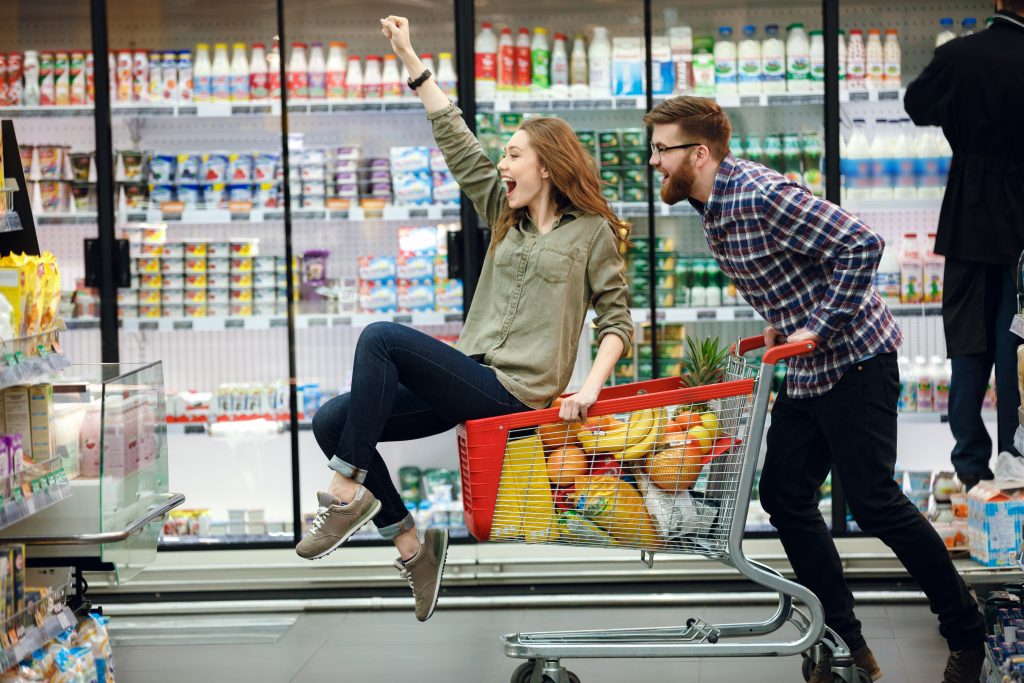8 Unexpected Ways to Use Indoor GPS
When people think Indoor GPS, wayfinding and navigation automatically come to mind. And they’re right – Indoor Positioning was created as a solution to help people find places indoors. But just like GPS in the outside world, IndoorGPS is capable of powering a lot of different, interesting ideas.
Thanks to the limitless creativity of the human imagination, and revolutionary advances in geomagnetic technology (that finally make Indoor GPS convenient and scalable), some truly innovative and unexpected applications for indoor positioning have come about:
1. Sharing and Marking Locations on Social Media
We all know of a certain generation who feel the need to share everything they see (and everywhere they go) on Social Media, so this one’s for you, kids. But let’s take it a step further, for the rest of us.
Accurate, real-time indoor positioning allows users to tag locations of specific things they wish to draw attention to within a building – whether it be a place, person, or object.
So when you see a product you like in a store, you can tag its location – maybe helping a confused significant other with gift ideas, or sharing and tagging that hip new video art installation you visited (at that secret gallery only the cool millennials know about…).

Doin’ it all for the ‘gram.
2. Find a Co-worker
For those of us working on big campuses or co-working spaces, meetings happen in a different place every day. And oftentimes, we don’t know the person we’re meeting, how to identify them, or where we’re meeting them.
This situation gets even more complicated in dynamic workspaces, where “hot-desking” means you literally don’t know which desk you’ll be sitting at today. In fact, studies show that employees can spend up to 30 minutes a day looking for meeting rooms (see Wall Street Journal).
When colleagues can share their locations with one another, things get a lot easier (and more productive!) – saving time, confusion and awkward situations in general.
3. Command & Control
In 2019, Security teams have more to deal with than ever before – especially when safeguarding large perimeters.
Now that Indoor GPS doesn’t require any installation, it arms security teams with extra advantages. Real-time monitoring via a dashboard in a control center allows dispatchers to keep track of guards’ locations in any given building at any time, and to send the closest person to a developing situation – thus reducing response time. Specific navigation instructions can be provided to emergency response teams, directly to the scene.
In case of emergency, security teams are able to send out individualized notifications and instructions to users in a particular area, as well as monitor their exit.
4. Split Shopping Lists
We already knew we’d be saving relationships around the world with shopping list navigation, but Split Shopping Lists put a refreshing twist on your usual weekly trip. Because Oriient’s wayfinding is able to create an optimized route based on a shopping list and the user’s location – with a split shopping list, each partner receives their own best route for half the list.
Sounds like more quality time for TV binging, and enjoying that wine you just bought.

“To the Rosé aisle!”
5. Fault Reporting and Buildings’ Systems Control
Maintenance and operations staff of large spaces can be much more effective with location-specific fault reporting. Users can tag exact locations of a spill, malfunctioning machine or out-of-stock item, helping staff to be more efficient and precise.
Additionally, using real-time locations of people, it’s easy to keep track of room occupancy, and control different systems in the building accordingly. For example, when a room is unoccupied, the air conditioning and lights can be turned off, saving money and energy.
6. Gamification and AR
Indoor GPS creates a whole new realm of entertainment that’s finally possible indoors – just like it is outdoors. From hunting Pokemon to collecting loyalty tokens – the options are endless for creative fun that’s safe and not weather-dependent. Encouraging user engagement within a space helps define its character.
7. Service and Assistance
A quicker, more convenient way of asking for help: Using Indoor GPS, shoppers can call for the assistance of a store associate, or users in a building can utilize a panic button with a single tap. In either of these situations, the functional quality is that the responding team can monitor the users’ precise location from their smartphone (even while continuing their journey), as well as the best route to reach them and provide assistance.
8. Offline-to-Online Attribution
It’s common knowledge that today’s customers do extensive online research before eventually making a purchase. In fact, the analytics of that online research they’re doing is already used to gather information about their buying behavior online.
Using Indoor GPS, retailers can now target customers in-store, based on what they were already researching online. For example: Susan’s been checking out perfumes online, but she’s going to have to go inside a store to actually smell them and decide between two. Since the store already knows she’s interested in “eau de odeour” and “eau de funk”, she gets a coupon notification via her phone for “eau de funk” as she walks by. Everyone wins (but Susan smells like “eau de funk”…).
As you can see, there are some really useful and fun ideas brewing – and not necessarily only using Wayfinding (for instance, we didn’t even get into the analytics and data behind all of these cool ideas). As it turns out, the limits of what Oriient’s Indoor GPS can do are only bound by creativity, and definitely not by hardware.
Click Here to learn more about Oriient’s hassle-free indoor positioning.
